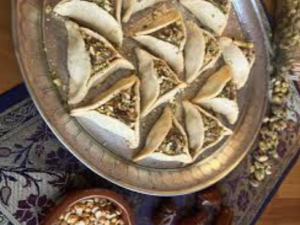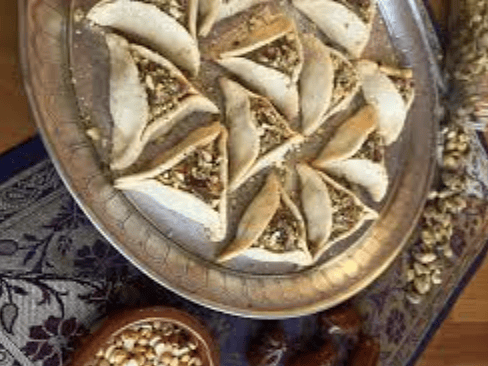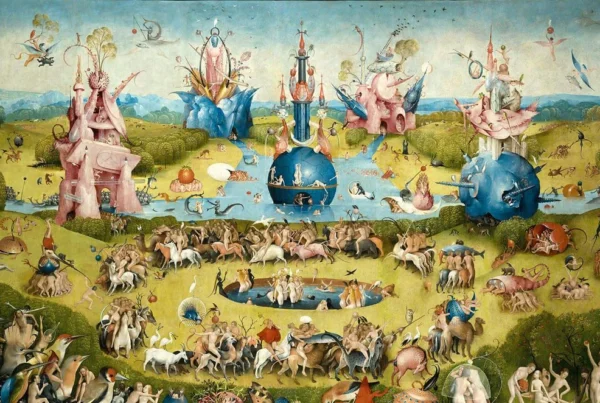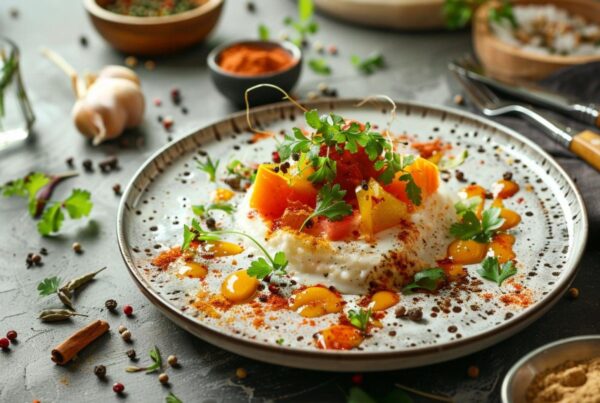
Instagram/ GlobalJews
There are Jewish people in India?
There are Jews all over! We tend to only hear about European and Middle Eastern Jews, but there are also many Jewish communities scattered throughout Latin America, Asia, and Africa (fun fact: one of the highest concentrations of the “Cohen gene” – the genetic marker on the Y chromosome of Jewish priests – can be found in members of the Lemba clans in Southern Africa).
There are five groups of Jewish Indians, each with distinct origins, histories, and languages. The largest group, the Bene Israel Jews, were shipwrecked on India’s western coast after the Assyrian conquest of the Kingdom of Israel 2,800 years ago. However, to a certain extent, they were isolated and their descendants adopted Indian customs, names, dress, and the Marathi language. The Bene Israel Jews were primarily oil pressers and agriculturalists who maintained their religion and traditions, including observing the Sabbath, which earned them the title of the “Saturday Oil People.”
The Cochin Jews likely came to the southern Indian state of Kerala starting from King Solomon’s time around 950 BC and continued migrating in waves. They adopted the Malayalam language and Hindu traditions, like living in compounds with large extended families while the grandmother would be in charge of the finances. Even though they embraced Indian cultural practices and local languages, they have continued to observe Jewish holidays and dietary laws.
Next, the Baghdadi Jews primarily arrived in the 18th century, fleeing religious persecution and searching for economic opportunities. They came from various Middle Eastern countries and settled in larger cities like Calcutta and Mumbai, bringing their traditions and foods with them.
The last two groups are much smaller – the Tribal Jews entered India through China and have Jewish-inspired traditions, although they are not officially considered Jewish. Lastly, the European Jews (German, Polish, etc.) fled Europe during the Holocaust, and many of them stayed in India even after the end of the war.
What unites all these Jews in all these regions?
Food! Each group of Indian Jews has a distinct culture, language, and traditions (a product of arriving from different places at different times and assimilating into different Indian cultures). But the two things that tie Indian Jews together are their Hebrew prayers and their observance of Jewish dietary law. Many Indian Jews do not mix milk and meat, do not eat pork, shellfish, and fish without scales, and keep kosher households. They often substitute dairy products for coconut milk when making meat curries, and some have become vegetarian due to the lack of availability of kosher meats.
The Bene Israel Indians were very influenced by the Maharashtra people upon their arrival, partially because of their isolation. They thus use coconut milk, hot chili, cardamom, cinnamon, turmeric, ginger, cumin, coriander, garam masala, and other Indian spices. For the Jewish holiday Passover, they have a seder (the dinner service with different foods representing different parts of the Passover story) and they have adapted these foods to what has been locally available. The Haggadah (the story and prayer book used at seders) has been translated into a mix of Hebrew, Marathi, and English. Similarly, the Cochin Jews have adopted elements of traditional Kerala cuisine and much of their food has become indistinguishable from local dishes. Since the Baghdadi Jews were more recent immigrants, they may have a stronger Middle Eastern influence. For example, they eat hameen (a dish with meat and vegetables) as well as koobe (stuffed dumplings), but have incorporated Indian spices and herbs like turmeric, cumin, coriander, fenugreek, and cardamom, as well as tropical vegetables like pumpkin, long bean, and bitter melon. As a result, The Baghdadi Jews have a unique mix of “old” styles from their homeland mixed with “new” Indian influence.
Rachel Kruge – an Indian Bene Israel chef (and also my former roommate)
Rachel and I only lived together for a few months, but we threw some memorable dinner parties. At the time she was working for a high-end Italian restaurant, and I took advantage of this learning opportunity and became her dinner-party-sous-chef. Since then, Rachel has begun working at a Michelin-star restaurant in the New York City restaurant Shmoné. The daughter of an Indian-American Jewish immigrant, Rachel is passionate about uncovering her family’s unique history and capturing the diverse flavors of Indian Jewish cuisine. She is also writing a cookbook using research she gathered from the Indian-Jewish communities living in Israel. Here are some of the questions and responses from our interview.
Me: Tell me a little bit about your family, and how your traditions and heritage have been a source of inspiration.
Rachel:
So there are three main communities of Indian Jews: Bene-Israel Jews, Cochini Jews, and Baghdadi Jews. My family is from the Bene-Israel community. There are only 5,000 Jews remaining in India. Before my grandmother passed away she was one of them, including a small number of my family who still live in India. The rest of my family moved to Israel, where they are currently raising their families. About 100,000 Indian Jews live in Israel now. So given the numbers, we are a small community filled with rich traditions and rituals. Indian Jews have unique food traditions and this has been very inspiring for me, motivating me to research and capture these traditions. My proposed project was to travel to Israel and record my community’s traditional recipes in hopes of one day making a cookbook of my findings.
Me: How did you get into cooking and how has being an Indian Jew shaped your culinary journey?
Rachel:
I got into cooking because of my mom. My mom is a full-time artist and when she wasn’t painting, she was cooking up a storm in our kitchen. I remember I used to watch her as a kid as she tossed spices together with no measuring tools in sight. I was inspired by her. Growing up as an Indian Jew born and raised in America to an immigrant mother and American father meant chicken nuggets and pizza with friends in school, while spicy coconut curries, cumin rice, and chana masala were served at home. My parents didn’t just cook Indian food, we ate everything!
My other inspiration came from travels with my parents. I was fortunate enough at a young age to be exposed to some eye-opening foods. With my picky palate when I was younger, I remember loving some and never wanting to try some again. Good or bad, those memories stuck. My parents reminded me that food was a window into someone’s culture. It gave me an appreciation for my mom’s version of curry, a lighter and healthier version made with coconut milk and ghee rather than the traditional heavy cream, butter-filled Indian dishes. I later learned from relatives in India and Israel that the use of coconut products in recipes is common practice for Indian Jews to abide by the laws of keeping kosher. My mind exploded with curiosity!
Entering college and living away from home meant I had to start cooking for myself. Luckily, I was able to enter the kitchen with confidence and remembered what my mom taught me when I was younger. It was almost second nature to me. It just flowed really easily. To the point where I found it meditative. After graduating college, I spent many years working my 9-5 in marketing. I loved it but loved coming home after work and cooking dinner more! Soon I took the leap of faith and applied to culinary school. Best career decision I have made to this day!
Me: What are you up to now?
Rachel:
Currently, I am working as a full-time chef at an Israeli restaurant called Shmoné in NYC. I am so proud to say that we just received a Michelin star. It’s been crazy, so busy, and just a whirlwind of excitement! It has been quite the 180 from my marketing job, and when I say 180 I mean from sitting 9-5 at a desk to an 11 am to midnight shift on my feet for about 11 to 12 hours. Sounds terrible right? But I love it! Outside of the long hours and hard physical labor, working at Shmoné has been an amazing experience. The most beneficial part of my job is interacting with the customers sitting at the bar in our open kitchen. Asking them about their experience and seeing how much they enjoy the food. It makes those many hours of prep so worth it.
You might be asking, what about the cookbook? Well, it’s a long process and I want it to be done right and beautifully. I still have so much research to do and my next stop is India!
And now the moment you have been waiting for… here is one of Rachel’s recipes so you can try out the vibrant flavors of Indian Jewish cuisine for yourself! – Written by Rachel
Puran Poli Hamantaschen with sweetened lentils, dates, & pistachios
Yield: 24 cookies
Based on a traditional Indian dish called puran poli, which was adopted by Bene Israel Jews as a custom on the holiday Purim, puran poli hamantaschen is an adaptation of the original recipe that combines it with another traditional Purim dessert: hamantaschen. Puran poli, also known as sweet flatbread, is traditionally made during Purim and served with a spicy lentil curry called dal. The traditional puran poli recipe is made by rolling out the dough (poli), filling it with the sweet filling (puran), and pinching the dough closed before rolling it out again into a flattened bread, which is then to be flipped onto a hot pan. Hamantaschen is a triangular-shaped cookie also made on Purim and filled with a variety of jams or chocolate. This recipe honors the two classic dishes to create an Indian Jewish Purim dessert that will surely keep you coming back for more!
Ingredients:
- For Sweetened Filling (Puran):
- 1 cup chana dal or yellow split lentils
- 2 tablespoons ghee/clarified butter
- ¼ teaspoon nutmeg
- 1 teaspoon cardamom powder
- 1 cup powdered jaggery (a concentrated form of sugarcane juice – substitute with one cup dark brown sugar plus 2 teaspoons maple syrup)
- ¼ cup chopped pistachios
- ¼ cup chopped dried dates
- For Hamantaschen dough:
- 2 cups AP flour
- 2 tablespoons semolina
- ½ cup powdered sugar
- 1 teaspoon cardamom powder
- ¼ teaspoon baking powder
- ¼ teaspoon salt
- 1 egg
- ½ cup ghee/clarified butter
- Rinse the lentils well with water. Soak them for an hour and strain.
- Pressure cook your lentils in water for 5 to 7 minutes. If you don’t have a pressure cooker, add your soaked lentils to a pot and cover with water. Bring to a boil then reduce to a gentle boil, partly cover, and cook for 45 minutes. Once your lentils have become very soft, strain the remaining liquid.
- In a bowl sift together the AP flour, semolina, powdered sugar, cardamom powder, baking powder, and salt.
- Combine the egg and ghee together. Add it to the dry mixture and combine until the dough forms. At first, the dough will be crumbly but the warmth of your hands will help to melt the ghee and create a dough.
- Refrigerate your dough for 30 minutes. In the meantime, continue to prepare the filling. 6. In a pan on low heat, add ghee, nutmeg, and cardamom powder. Fry for a few seconds to release aromas.
- Add cooked lentils and jaggery (or dark brown sugar/maple syrup). Stir occasionally on low to medium heat until the mixture becomes dry. Turn off the heat once the lentil mixture is dry and thick.
- Let it cool and mash with a potato masher. Keep aside.
- Preheat oven to 350 degrees. Remove the dough from the fridge and divide it into 2 sections. Place the dough between two pieces of parchment paper and roll out to about ¼ inch thick. Using a 3-inch cookie cutter, cut into circles. Continue this process by balling up the scraps and rolling them out again. Repeat with the 2nd section of dough.
- Fill each circle with 1 tablespoon of sweetened puran filling. Fold over and pinch the corners to form a triangle.
- Bake for 20 minutes or until just starting to brown.
- Carefully remove cookies and let cool.
Other posts that may interest you:
- The Trouble with ‘Ecocide’
- Carbon dioxide removal – hit or miss?
- Local Victories for Turkish Opposition — A Sign of Hope?
- Are France and Japan a Mismatch Made in Heaven?
- A Reflection on Dark Tourism
Discover more from The Sundial Press
Subscribe to get the latest posts sent to your email.





